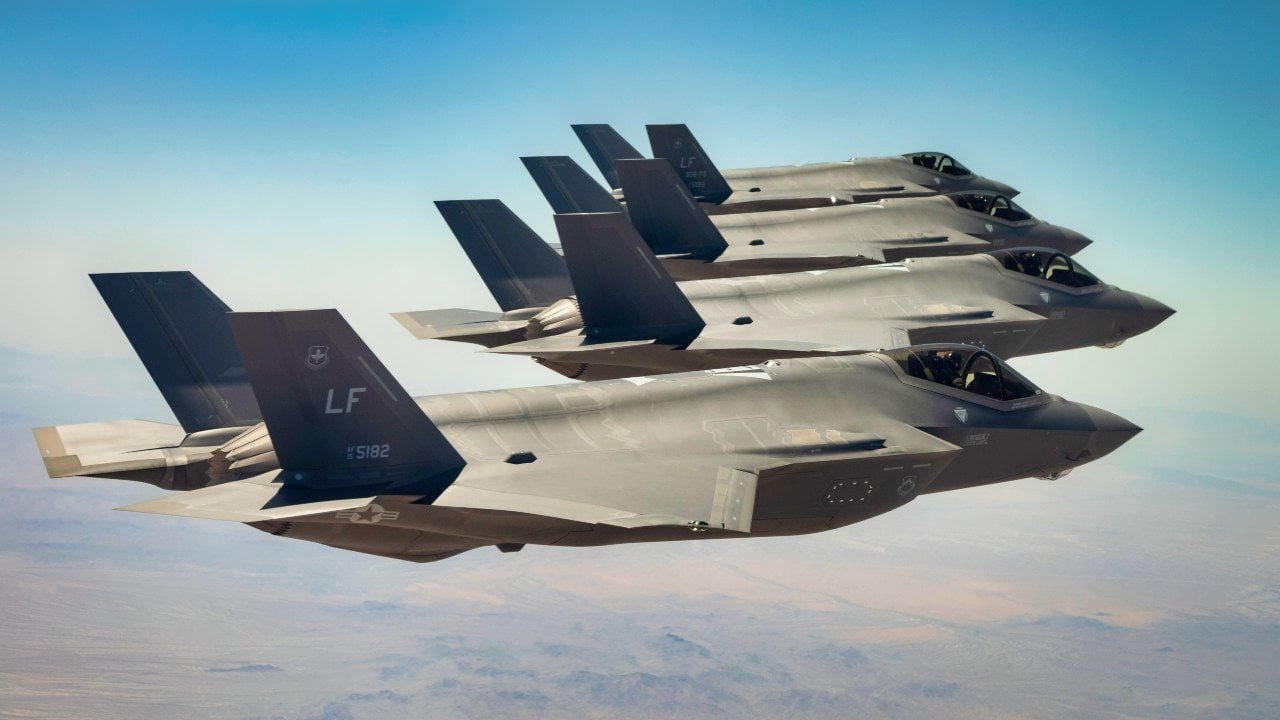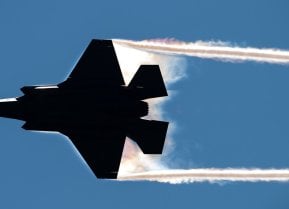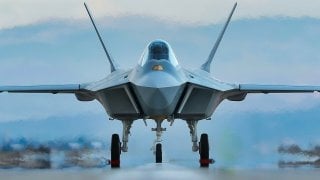TAI TF Kaan: Turkey’s New 5th-Generation Fighter Is a Dagger Aimed at the Heart of NATO
Turkey’s relations with the West have declined, partly due to the refusal to sell Patriot missile batteries and exclusion from the F-35 program. Turkey has instead developed its own fifth-generation fighter, the TAI TF Kaan, with advanced stealth and avionics, to replace its aging F-16 fleet.
Summary and Key Points: Turkey’s relations with the West have declined, partly due to the refusal to sell Patriot missile batteries and exclusion from the F-35 program. Turkey has instead developed its own fifth-generation fighter, the TAI TF Kaan, with advanced stealth and avionics, to replace its aging F-16 fleet.

-This move indicates Turkey's shift away from Western alliances, raising concerns about interoperability within NATO and potential competition with the F-35 in the export market.
Healthy relations with Turkey have been declining for many years, especially since the Obama administration refused to sell Turkey Patriot missile batteries. Even before that moment, though, Turkey had been turning away from the West. Not because Turkey was inherently anti-Western per se. But because the European Union balked at embracing Turkey as a member – something that Turkey’s government had desired.
From that moment on, a decline in Western-Turkey relations began.
A History of Broken Relations
During the Patriot missile fiasco (which was entirely the result of Obama administration ignorance), NATO-member Turkey decided to stick it in the eye of the Americans, and NATO, by purchasing Russian air defense systems. This was in violation of the NATO pact, which required all members to purchase systems that integrated with each other.
Since Russia was not a member-state of NATO, their systems were not considered interoperable with the wider ecosystem of defense products created by NATO members.
During the contentious 2014 Turkish presidential elections, it is widely believed that Turkish leader, Recep Tayyip Erdogan, and his Islamist party essentially rigged the election to stay in power.
The deterioration in U.S.-Turkey relations continued apace when, a few years after that, there was a failed coup against Erdogan’s increasingly authoritarian rule. Erdogan initiated a crackdown, blamed the Obama administration, and began distancing NATO member Turkey from the West.
Since that time, Turkey has acted less as a dutiful member of the NATO alliance and more as a free agent. Throughout the so-called “Arab Spring” (in fact, an “Islamist Winter”), the Turks supported a variety of jihadist groups. They have striven to undermine the Americans in the Middle East and their Israeli partners as part of a bid to restore the Ottoman Empire that had collapsed at the end of the First World War.
Turkey has also become the target of unfair NATO retaliation.
Greece, another NATO member and rival to Turkey, has engaged in a series of provocations against Ankara over control of oil-and-natural-gas deposits along islands in the Aegean Sea. Ankara and Athens contend over the fate of Cyprus, part of which fell under Turkish control after an invasion in the 1970s. Turkey is further embroiled in tensions with Egypt and Israel over natural gas rights in the Eastern Mediterranean.
As Turkey has found itself at loggerheads with the West, it increasingly looks to alternative power centers to back its government up on the international stage. Thus, Turkey has moved in closer to both Russia and China, while at the same time doing business with the embattled regime of Iran.
A physical manifestation of this turn away from the West has been in the form of Turkey’s construction of a new, fifth-generation warplane, the TAI TF.
TAI TF Kaan: How Turkey’s New Fifth-Generation Warplane Fits Into the Puzzle
The Turkish TAI TF stealth fighter, also known as the TF Kaan, is a fifth-generation, all-weather, multirole aircraft developed by Turkish Aerospace Industries (TAI) in collaboration with BAE Systems. The TF Kaan is designed to replace the aging fleet of F-16 fighter jets that comprise the bulk of the Turkish Air Force fleet.
After Turkey was officially kicked out of the F-35 program in 2019, Ankara needed to stand on its own by replacing those older fourth-generation warplanes with a fifth-generation bird of its own.

Turkey’s TF Kaan boasts advanced stealth capabilities, making it difficult to detect by radar, infrared, and other sensors. It is equipped with advanced avionics, including a fly-by-wire system, active electronically scanned array radar, and an electronic warfare (EW) suite. The aircraft is powered by two F110-GE-132 engines, each providing 14,590 pounds of thrust, enabling the bird to reach a top speed of Mach 1.8 and a service ceiling of 55,000 feet.
The TF Kaan has a combat radius of 600 nautical miles (and 690 miles away). This warbird can carry a variety of weapons, including air-to-air weapons, air-to-ground missiles, and guided bombs. It is also equipped with a 20mm cannon for close air support missions.
The Turkish Air Force plans to deploy the TF Kaan by the early 2030s. The aircraft will be used for air superiority missions, ground attack, and reconnaissance.
Despite their desire to lift themselves up and invest in their own defense, Turkey’s NATO allies have balked. The Americans, in particular, have grave reservations about the TF Kaan. This stems back to the way in which Turkey purchased Russian S-300 air defense systems.
So, rather than wait for the Americans to come around, the Turks have opted instead to go for their own plane. Hence, the fifth-generation warplane known as the TF Kaan. Turkey still needs a fifth-generation bird. If the West cannot provide it, and no other powers seem interested, the Turks will build their own system.
Not only is the TF Kaan going to lack the interoperability that the NATO alliance strives for, but it will become a possible export challenger for those seeking to expand the money of Turkey.
The key benefit of America’s F-35 program is that it includes 17 allied nations to burden-share in the development of this warbird. As a fifth-generation aircraft, the costs of building and maintaining this aircraft is onerous. One of the major stumbling blocks to the superior F-22 Raptor was that the U.S. Air Force refused to burden-share costs with allied nations.
This was because the U.S. Congress was concerned about extremely sensitive, classified American military technology being exposed to foreign governments who might either misuse that technology or improperly share it with third parties. But because the Air Force was required to exclusively fund it, the plane was always viewed as expensive.
A Problem for Interoperability
Turkey’s new fifth-generation warplane possibly negates the F-35’s competitive advantages. If Ankara’s designers can create a plane that is as good – or almost as good – as the F-35, and if Turkey can build it cheaper, then it’s a whole new ballgame in terms of an export market challenge. Recouping the expenses of the F-35 over the last 30 years is a priority for the U.S. government.
The presence of an independent, fifth-generation warplane produced by NATO member Turkey, could leave an insuperable wound in the U.S. defense community’s plans for financial restitution for their massive investment.
As for the reactions of foreigners, well, they have been mixed so far. While some countries have expressed interest in acquiring the aircraft, others, such as Greece and Cyprus, have raised concerns about the potential impact on regional security. This is not surprising, considering the aforementioned tensions among those sides. Indeed, it risks completely collapsing NATO’s vaunted southern defense perimeter, as Athens and Ankara bicker over everything from territorial rights to whose culture is superior.
Thus, the TF KAAN-F-35 debate rages within this nasty context.
Turkey has broken with the United States. The creation of an indigenous fifth-generation warbird to rival the F-35 is just the inevitable, ultimate end of this shift.
Author Experience and Expertise: Brandon J. Weichert
Brandon J. Weichert, a National Interest national security analyst, is a former Congressional staffer and geopolitical analyst who is a contributor at The Washington Times, the Asia Times, and The-Pipeline. He is the author of Winning Space: How America Remains a Superpower, Biohacked: China’s Race to Control Life, and The Shadow War: Iran’s Quest for Supremacy. His next book, A Disaster of Our Own Making: How the West Lost Ukraine, is due October 22 from Encounter Books. Weichert can be followed via Twitter @WeTheBrandon.
All images are Creative Commons or Shutterstock.
From the Vault
Russia Freaked Out: Why the U.S. Navy 'Unretired' the Iowa-Class Battleships
Battleship vs. Battlecruiser: Iowa-Class vs. Russia's Kirov-Class (Who Wins?)


